The inbound marketing megaphone has gotten clogged with voices over the years, and content has come in droves like a landfill tsunami coming for all of us. Consequently, it’s gotten harder and harder to distinguish your voice from the white noise.
This is far from a standalone occurrence, because, according to HubSpot, 63% of marketers admit their top challenge is generating enough traffic and leads. Why is this happening, and what can you do to rise above it all?
You know the basics of good inbound marketing – creating buyer personas, blogging frequently (daily, if possible), publishing on social media, sales and marketing alignment – but there are deeper layers to this onion.
Those are many activities that you and me take for granted as marketers, but there’s more to peel back on how you can hone in on your audience and truly stand out against your content neighbors.
I’ve broken this post up into 5 specific sections: SEO, personas, content, social media, and video. Ready to dive deep? Bring your scuba gear – this ain’t no kiddy pool.
SEO
Best Practice #1: Look at SEO Multi-Dimensionally
We’ve all fallen into the habit (myself included) of going caveman with SEO: “high search, low difficulty, good keyword.” While those are indicators of rankability, when’s the last time you took an entire website SEO sweep on your pages and blogs? Stop thinking about what you think is best to rank for, and instead, put yourself in your buyers’ shoes and ask the question again.
The marriage of high search volume, low to mid difficulty, and high opportunity is the making of a fantastic keyword – but you’re only 75% of the way there by basing it off of that. You also need to examine:
- Your persona pain points: What do your buyer personas typically have a hard time with, and why? While it’s a common question, and may seem surface-level, the degree to which you delve into this can make or break your keyword strategy. This is where sales alignment comes in. Gather common questions your salespeople get in the sales process, as well as information on any progressive profiling contact properties you’ve gained over time. Also, examine your core keywords list and reevaluate them if you need more SEO juice.
- Competitors: Business is evolving all the time, and your competitors are doing the very same thing you are; changing messaging, refining keywords, and fine-tuning their site to succeed. If your competitors considerably up their game, then you’ll need to monitor what it is they’re doing and devise actionable ways to use keywords and generate quality, kickass content to outrank them. It’s a vicious rank battle out there.
- Search engine algorithms: Google’s always tweaking their ranking formula, with the end goal to always provide the best experience to the end user. Among the last few updates has been “Mobilegeddon,” as well as RankBrain, which takes crawling pages and the evolution of Google to a whole new level. These changes can drastically affect your website, especially if you try to keyword stuff or have disruptive pop-ups. Stay up-to-date on changes to come, and do your due diligence and research so your site isn’t hit.
SEO is no simple task, largely because it has to be constantly catered and checked on, like a toddler in a room of breakables. While you do need to let the dust settle after optimizing your site so Google can crawl, you should be seeing your rank and progress monthly and quarterly, and making iterative changes based on your findings.
Personas
You’ve heard about personas everywhere: they’re your ideal buyer, well, personified. Creating these semi-fictional personas is a valuable way to get into your prospective customers’ heads and find out what messaging resonates with them most in order to constructively help them.
Now let’s take this ideology up a notch.
Best Practice #2: Search, and Differentiate
You don’t make an impact by being the same as everyone else, or by making repetitive moot points. The question that you really need to ask yourself as a marketer is, “What makes my content and product/service better than those of my competitors, and how do I showcase that to my ideal buyers?”
Marcus Sheridan relayed an important message about standing out in a Sales Lion email: show your secret sauce, he says:
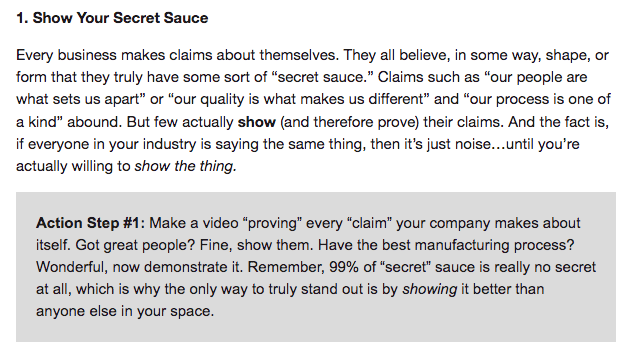
Credit: Sales Lion subscription email
Here at Bluleadz, we showcase this in every prospect video – our culture, who we are and why we’re different, and we go the extra mile to make that human connection. That helps us appeal to our ideal personas through pathos, while simultaneously portraying our video skillset.
What Marcus is saying here is SHOW, DON’T TELL. This is also a valuable rule in writing. Be ready to solve pain points, and not just say “we’re the best!” Differentiation is key.
Some harsh, but necessary truths you need to know about persona-driven marketing is:
- Unless you’re an Apple-sized corporation with thousands of brand-loyal fans, chances are, your personas don’t care about your company. Although 52% are going to look at your “About Us,” page, at the end of the day they’re coming to your site because of a specific pain point or issue. If your website isn’t catered to helping them in a user-friendly way, they’ll find what they’re looking for somewhere else – and fast. According to a Nielsen study, the most engaging websites have a value proposition that’s clear, and can be read within 10 seconds of landing on a site.
- If you’re not starting with a problem or pain point, your website could be all sorts of ass-backwards. Focus on your top 1-2 personas, and work retroactively from their problem to how you solve it (and show how you do that better/differently than everyone else)
- Help them self-identify if they’re going to be a good fit early on – this will help both you and them in the long run. We’ve all experienced bad fit clients before, and these engagements end up complicating and muddling results, as well as scope. Knowing when to say no is just as important as saying yes.
You can show personas that you’re a caliber above the rest by using a video like Sheridan mentioned, or by interviewing your top customers to find out why they closed with you and continue to stick with your business. There may be pointers that you never even realized, which can be extremely valuable to your personas. You can use these insights to further flesh out your personas, and create content and value throughout your site.
Also, look at current content that’s out there and see how you can stand out. Maybe all search results about “Cats in St. Petersburg,” are just Q&A sites like Yahoo Answers – if local kitten sales is industry, see what those users are asking, and wrap those points back into your content and website strategy. Consider an infographic on adopting cats as a way to differentiate from the walls of text, or what products cat owners love best for kittens vs. cats in a fun chart or diagram. Diversifying through white noise is an inbound marketing best practice for sure.
Personas are something you’re always going to adjust and add to over time as you learn more about your buyers; it’s never a journey that just ends. You or any in-house writer will always be referencing personas to see how your projects bring maximum educational and help to users. Otherwise, it’s just not inbound.
Remember, inbound is about providing helpful, meaningful content to your audience – don’t lose sight of that.
Content
You can have the most beautiful website on the planet – fun fact, 38% of people won’t engage on a website that looks “unattractive” – but if the content is nonsense, you won’t make any traction. It goes without saying that content is at the epicenter of everything marketers do (even though yes, I did just “say” it). However, there’s a clear difference between great content and awesome content.
Here’s how you can up your content ante:
Best Practice #3: Work Your Editorial Backwards
No, this isn’t some off-the-wall “hack” that will change your life forever, but it is a whole new way to look at completing your editorial calendars. Everything I just mentioned about personas filters directly into this best practice about creating a calendar with valuable content that resonates with your intended audience.
For example, this is how some create editorial calendars:
Keyword research → Topic brainstorm (research, team member session, etc.) → Add to calendar
What’s missing here? We’re not explicitly considering our personas, or imbuing them into the process! For shame. Sure, you’ll get workable titles this way, but that’s how you get good content – and are you willing to settle for that? It may have worked in high school when you read the Cliffsnotes the night before for a test on The Scarlet Letter, but good content won’t get any engagement. Awesome content will!
Here’s how you work “backwards” to create a calendar with quality articles:
Evaluate personas’ pain points → Topic brainstorm → Keyword in mind to use → New topic based on aforementioned information to calendar
Stop trying to force a keyword into a title; instead, work from the pain point and relate it back into a topic from there. That extra step in the beginning will ensure you’ll always generate content that your personas will find helpful and valuable. It’s really the essence of inbound here that you’re maintaining.
Content is a huge umbrella term, so consider this in your lead nurturing efforts, website workflows, newsletters, blogs, and premium content offers moving forward. Trust me, you’ll be glad you did.
Social Media
There are millions of people on social media across all platforms. From Facebook, to Twitter, Instagram, Snapchat, and beyond, these bring a whole new meaning to the way we market and present products/services to our audience. Many times, though, we fall into the trap of publishing self-promotional material without prioritizing value.
Here’s how you can take your current social media efforts and get a firm readership and following:
Best Practice #4: Be Where the People Are
Hear me out, as I’m sure this seems very obvious. As you’ve probably noticed, a lot of how these best practices are framed in the order in which you should establish your inbound plan (most of the time – there are exceptions/priorities that change between every business).
Your audience needs to be Ariel, and you need to be that piece of pizza. Posting erratically on your Twitter without any goal or target audience means you may as well be a TV blaring commercials when no one wants to listen. Of course promoting and being active on your channels is important, but it’s how you do this that can make or break your approach.
Benji Hyam from Grow & Convert wrote an incredible piece on how their agency grew from 0 to 32,977 users in 5 months with zero paid traffic. A large part of that involved properly promoting the content they worked hard to generate (trust me, I’m on hour 4 of this post). He talks a lot about the importance of community-driven content promotion.
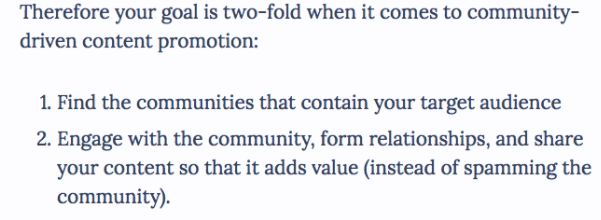
Credit: Grow & Convert
When you’re on social media, you usually are talking to friends, or engaging with communities of people who have common interests, right? Then why not do the same with your marketing content? This is why initial persona research is so important – so you can find where those users are, and so you can present catered content on a silver platter to the places they already are.
Search for communities on Facebook groups, LinkedIn groups, and even Quora like Benji mentions (it’s a great Q&A forum for questions of all shapes and sizes). Life is hard enough as it is, so why add steps for your readers to view your content?
Go into these groups and post colloquially – if you come across as stuffy or impersonal, no one will want to interact with you since your content will seem disingenuous.
Look into groups that are active with lots of members; that way, you won’t ever be out of ideas or things to talk about. Since you’re an expert in your field, you can provide helpful tips and tricks to those posting questions. As you get acclimated and earn the group/community’s trust, you can make a post or reply to someone about how your piece(s) of content helped gain a specific victory or goal for a customer.
Of course, how you interact largely depends on your audience – if it’s a younger, more “fun” audience, you can play troll like Wendy’s is known for doing:
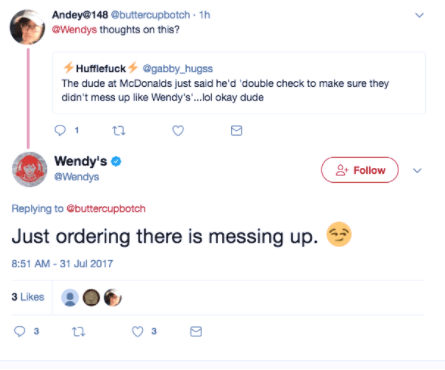
Finding new channels, as well as responding and engaging with your followers, is integral to a well-oiled social media machine. This is why it’s becoming more and more feasible to have someone’s sole responsibility manage a company’s social media channels and responding.
As a final note, make sure to gain exposure and readership by using hashtags like you would keywords. That way, you can increase the chances of your message being found. Here’s an example of how we do it on BZ’s Instagram:
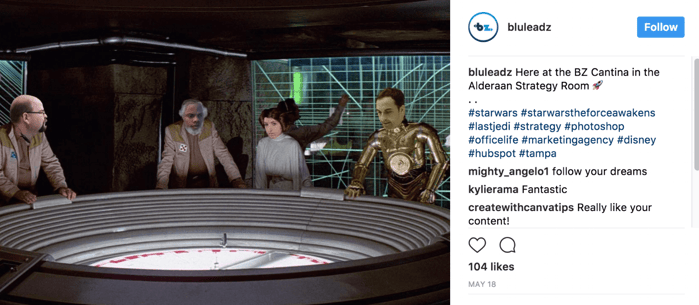
Video
Ah, video. While everyone’s jumping on video as the newest and hottest content format for marketing, being aware of how to best utilize this from an inbound perspective is key. For instance, if you’re in manufacturing or SaaS, these are great industries in which you can visually display your processes, and help your viewers derive immediate worth.
Make sure your approach for video accurately hones in on your business’s culture, and has a goal everyone agrees with:
Best Practice #5: Optimize, and Segment
If you’ve made it this far, congratulations! Inbound is an expansive subject to talk about, especially if you go farther than just the surface elements we already know. That said, video has become more financially feasible than ever due to high-quality cell phone footage and equipment.
Video is about augmenting your marketing gameplan. While it is a viable form of content, you shouldn’t depend on a video to do all the work for you (unless that’s your business – doing videos – but you get the idea). You need to find a need, and fulfill that need for your personas. This best practice can be a bit harder if you don’t have the time or resources, but it does pay off!
At Bluleadz, we’re known for the prospect/sales videos I mentioned earlier; once we’ve sent out our proposal, we make a fun video about our team, and how we’re excited to get started with them:
We’ve found that this increases our regular close rate by 37%, which is pretty friggin spectacular. Your business has an equivalent – it’s all about finding where you can bring helpfulness and bridge that education gap.
Explainer videos are becoming increasingly popular, because they’re basically a 1-2 minute pitch about what your company does. It’s not just a static shot of someone talking; it’s exciting graphics and animations that keep viewers entertained.
Check out the best explainer videos we’ve ever seen!
Here are a few ways how you can optimize and segment videos:
- Create an ongoing series, in which you cover the most common questions you get in sales so you develop a library to use for future correspondence
- Record a screencast in which you do a “how to” video with something regarding your services (perhaps a new function for SaaS, for example) – make sure you’re showing your face alongside the screen (or even just in your thumbnail) for optimal personalization!
- Quick voicemail videos during the sales process for sales qualified leads or opportunities who may have gone dark, or aren’t responding (this can be easily shot with a smartphone)
- Make quick 30 second - 1 minute videos on your landing or thank you pages describing what the offer is, and how it will help your website visitor or lead.
Of course, using video will be a best practice and marketing staple moving forward, since 43% of people want to see more video content from marketers (via HubSpot). The more people see you and your employees’ faces, the more personalized you’ll become, and avoid being a cold, corporate business.
This is why optimizing your video for advanced analytics (to see what’s working and what isn’t) and visitor/user interaction is paramount for inbound.
Come Sail Away
Doing inbound on a phenomenal scale takes company-wide consensus, tons of dedication, and well, a bit of blood, sweat and tears. I hope this was helpful to take a deep dive into some inbound best practices, and to do more than just “post on social,” or “publish content every day.”
At the end of the day, what you put into inbound is what you get out of it, like everything else. Inbound marketing takes considerable time to get ramped up, but with it, you’ll see fantastic results, comments, interaction, and growth. That’s how you’ll know you’ve honed in on your target audience.
Let me know what you’ve done to improve upon your inbound strategy. Take back your website, and help your water fountain spout proudly, rather than being snuffed out from the other white noise out there.

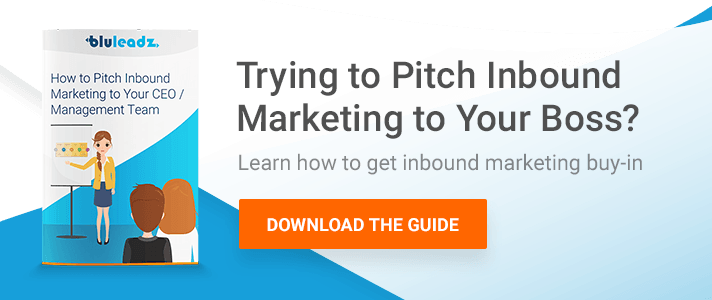
Rob Steffens
I am the Director of Marketing here at Bluleadz. I'm a huge baseball fan (Go Yankees!). I love spending time with friends and getting some exercise on the Racquetball court.